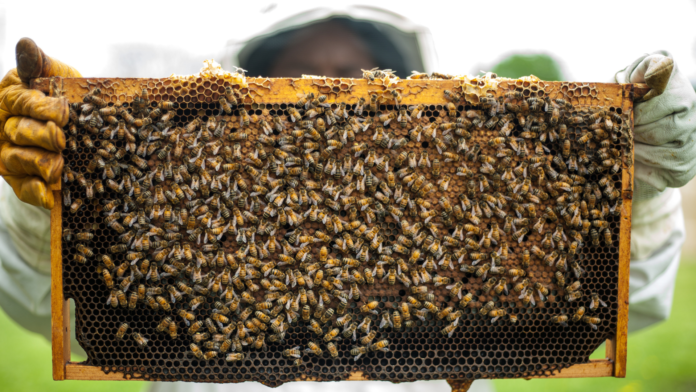One in every three bites of food we eat is made possible by pollinators like honey bees. These little critters have a huge impact on both food and flowers. But while the number of beekeepers in Canada is rising, bee species that used to thrive are disappearing.
Numerous factors affect pollinator health, from pests and parasites, to weather and pesticides. But when a queen and her colony dies, beekeepers can only guess at the cause. Now, researchers at the University of British Columbia (UBC) and North Carolina (NC) State University want to change that.
“Honey bee queens mate several times early in life, then maintain the sperm for years in a specialized storage organ until they die,” explains Dr. Alison McAfee, a biochemist at the Michael Smith Labs at UBC and postdoctoral fellow at NC State. Colony health directly depends on the queen’s ability to keep these sperm alive so that she can produce an abundance of worker bees to keep the colony going.
Unfortunately, extreme temperatures and pesticides can dramatically reduce sperm viability, which poses a major threat to honey bee colonies.
To try and understand more about queen and colony failure, McAfee and team exposed healthy queen bees to three common stressors: extreme heat (40 °C for up to two hours), extreme cold (4 °C for 2 hours), or non-lethal levels of pesticides (either the widely used imidacloprid insecticide or a mix of nine different pesticides).
Using the three stressed groups and a control group, the researchers used comparative proteomics to identify protein signatures produced in each of the stressful scenarios. These proteins act as markers. Looking for these markers in ‘wild’ queen bees can help researchers and beekeepers understand why a colony has failed.
To put the biomarkers to the test, the scientists then analyzed 60 failed queens sourced from local beekeepers. They found markers of pesticide exposure and, to their surprise, elevated heat stress markers.
“We didn’t have any reason to believe that these queens were heat shocked,” said McAfee. “A substantial number of them had elevated levels of those particular markers, which could mean that there is a lot more temperature stress going on out there than we would expect. It could also be that those markers also become elevated due to other kinds of stresses that we haven’t looked at yet.”
The effect of extreme temperatures is a concern for Canadian beekeepers, who import 250,000 queen bees each year. Between fluctuating temperatures in transit, and climate change affecting local conditions, queens are increasingly at risk. But in future beekeepers could send the queen for testing to learn what caused the failure.
“We want to develop a diagnostic test that we can do on a failed queen, which can provide the beekeeper with information on what happened to her in the past that made her fail now,” explains McAfee. “If we can do that reliably, then the beekeeper could do more to try to prevent that from happening in the future.”










































